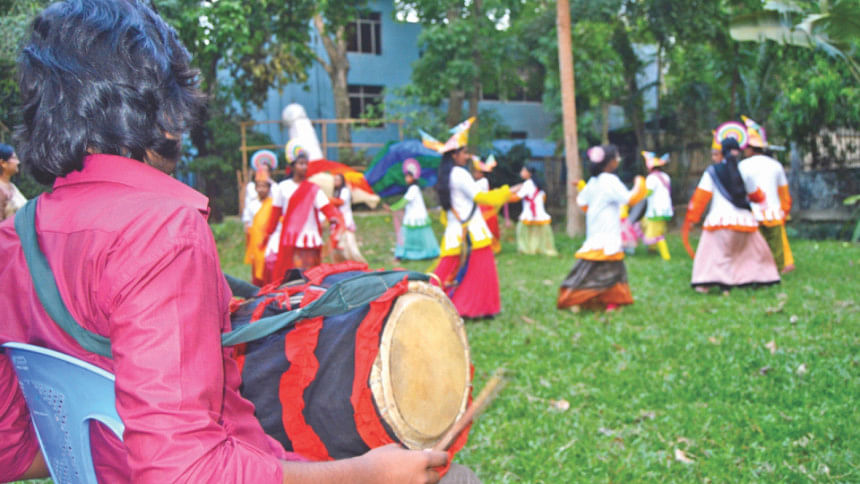MONGOL SHOBHAJATRA

The first light of Mongol Shobhajatra, the colourful procession at the dawn of Pahela Baishakh, illuminated Jessore in 1985. Charupite Jessore, an art school, which had organised the colourful procession at the dawn of Pahela Baishakh, is celebrating the third decade of their initiative today.
Since then the school has added attractions to the traditional procession such as dancing, theatre, puppetry, and moppet shows.
"There will be no audience for our shows. All the participants in the procession will be heroes and heroines. They will dance, don masks and play the roles of kings, queens, fairies, flowers, birds and butterflies,” said sculptor Mahabub Jamal Shamim, who was one of the initiator of the Mongol Shobhajatra.
After Jessore, a similar procession was brought out in Dhaka Baishakh in 1989.
Mongol Shobhajatra, was the brainchild of two other youths apart from Shamim: print artist Moklesur Rahman and painter Heronmay Chanda, pioneers of the Jessore procession, which became an integral part of Bangla culture.
Shamim said that they established Charupith, in Jessore on February 8, 1985 at the old building of Jessore MM College at Puratan Kasba in the town. However, since the institute needed an introduction to Jessore residents, they took the initiative of a colourful procession to pay tribute to the language martyrs on February 21.
"After the success of that initiative we decided to take the people of Jessore by surprise on the first day of the Bangla year. Around 300 children of our art school were dressed as prince, princesses, flowers, birds and so on. We carried bright masks, models of animals and other symbols of our Bangla heritage. We arranged a local musical team for our procession. We wanted to establish Pahela Baishakh as a festival or rather a carnival for all religions," Shamim said.
And thus the Mongol Shobhajatra became a national phenomenon.

 For all latest news, follow The Daily Star's Google News channel.
For all latest news, follow The Daily Star's Google News channel. 



Comments